- Home
- Paul Christopher
The Sword of the Templars t-1 Page 16
The Sword of the Templars t-1 Read online
Page 16
“I can’t see them burying a treasure in an open pool,” said Wanounou. “It’s more likely near one of the wells.”
“Where were they?” Peggy asked. She came and looked over his shoulder at the diagram, her arm brushing his. “Show me,” she said.
“They’re long gone,” replied the professor. “We never found anything remotely like a well when we were excavating.” He shrugged. “Mind you we barely touched the surface here before the IDF kicked us out and brought in Shayetet 13.”
“Maybe I can do one better,” said Holliday, stepping between Peggy and Wanounou, glancing at the diagram in the professor’s hand. “The verse says, ‘A search for knowledge girded round these holy walls…’ That sounds like a church to me.” He pointed down at the diagram. “That long oval shape with the square at one end, close to the seaward wall, what’s that?”
“The undercroft-the crypt-beneath what we think was the chapel,” said Wanounou. “We called it the Round Church.”
“Mimicking the Church of the Holy Sepulcher in Jerusalem,” nodded Holliday. “Like all Templar churches.”
“That’s right,” said the professor.
“ ‘These holy walls,’ ” said Holliday. “It’s worth a shot.”
They picked their way slowly down the embankment and began to make their way across the rubble-strewn expanse of the castle’s middle ward.
“From the way you speak about them I take it you’re not one to toe the party line when it comes to the Templars,” said Wanounou.
Walking between them, Peggy laughed.
“Doc doesn’t toe the party line when it comes to much of anything.” She grinned. “Must run in the family.”
“You’re not a believer in their Christian piety?” the professor asked, cocking a skeptical eyebrow.
“I think some of them were religious fanatics,” said Holliday. “Most of them were mercenaries. There were a lot of unemployed knights back then. A few of them might have believed in the cause, but not many.” He shook his head. “I’ve been in a lot of wars in my time, Professor, and one way or another they’ve always been about money. The Crusades were no different.
“Castles like this one weren’t built to protect pilgrims, they were built to give Europe a foothold in the Middle East. Like the Hudson’s Bay Company in Canada or the U.S. Cavalry outposts in the American West. The crusaders didn’t want to free Jerusalem from the infidel, they wanted to conquer it.
“The Templars called themselves the ‘Poor Fellow-Soldiers of Christ,’ emphasis on the word ‘poor.’ By the time they were disbanded in 1307 they were almost as rich as the Roman Catholic Church and richer than some countries, including France, which they virtually owned outright. The Temple fortress in Paris measured seven hundred feet on a side. That’s not piety, Professor. That’s greed, avarice, and power.”
“But that doesn’t stop you from looking for their treasure.”
Holliday stopped walking. He turned to Wanounou.
“This isn’t about treasure,” he said, a little anger creeping into his voice. “It never has been. It’s about something that concerned my uncle enough to get him to tramp halfway across Europe at the age of eighty-six when he hated leaving the study in his house. It’s something that seems to concern some other people, as well; they’ve been looking for the answer to this riddle for a very long time. They’ve been willing to lie for it. Burn down buildings for it. Kill for it.”
“Then I guess we’d better find it,” said Wanounou brightly, ignoring the heat in Holliday’s words. “Right, Peggy?”
“Right,” she answered. She gripped Holliday’s elbow and squeezed. “No more lectures, Doc, okay?” She squeezed his arm again. “Now, make nice with the professor.”
“I’m not your enemy, Colonel Holliday,” added Wanounou. “I got us in here, didn’t I?” He held out his hand. “Shalu shalom yerushalayim, yes?”
Holliday took the extended hand and shook it.
“Call me ‘Doc.’ ”
They turned and continued on toward the ruins of the ancient castle church.
19
They reached the far end of the castle’s upper ward and stopped when they came to the long oval of stones that marked the foundations of the old chapel. Wanounou consulted his diagram once again.
“One hundred and sixty feet long by forty feet wide,” he said. “Rotundas at each end, the chancel facing north, the nave to the south. There was a cloistered walkway that connected the chapel to the main great hall over there.” He pointed toward a long, freestanding line of immense limestone blocks, even larger than the stones used to build the curtain wall. “The builders used a lot of leftovers from the Phoenician structure that was here before them,” he explained. “Everything done in eights and multiples of eight. Eight columns in the nave, two columns of eight in the chancel, eight arches in the cloistered walkway.”
“Why eight?” Peggy asked.
“Eight was the Templars’ magic number,” said Holliday. “If you look at a Templar cross the ends are bifurcated, making eight points.”
“What was the significance?”
“Mostly religious,” said Wanounou. “Seven plus one equals eight, the day of the Resurrection. God created Earth in six days, rested on the seventh, and introduced man into the Garden of Eden on the eighth. Man has twenty-four ribs, divided by eight gives you three-the number of the Holy Trinity. Noah was the eighth man off the Ark. The Ark itself was three hundred cubits by fifty cubits-three plus five is eight. Lazarus was brought back to life after he’d been dead eight days. The first cubed number is eight… The list goes on and on.”
“Which is important to us here why?” Peggy asked, looking at the foundation work at her feet.
“Because what we’re looking for will probably have something to do with the number eight or a multiple of eight,” said Holliday. He began pacing out the length of the foundation in one direction, while Wanounou went the opposite way.
“Just what are we looking for?” Peggy queried.
“ ‘In the black waters of the Pilgrim’s Fortress a treasured silver scroll is found,’ ” recited Holliday. “ ‘Black waters’ suggest that it was dark, maybe underground, like the undercroft, or crypt beneath the church,” he said.
“It’s probably some kind of cave,” called out Wanounou. “The land around here is all limestone. Groundwater percolating down from the mountain creates them. The whole area under Pelerin is probably riddled with them.”
“I’m claustrophobic,” said Peggy. “I had to do a photo shoot for National Geographic in Carlsbad, and I hated every minute. Caves are creepy.”
“We’ll protect you,” laughed Wanounou.
“I may have found something,” called Holliday.
“That didn’t take long,” said the professor, turning away from his own investigation of the stones. He joined Peggy, and they walked back toward Holliday’s position at the far end of the chancel.
“You sound skeptical,” said Peggy.
“Archaeology’s never that easy,” he answered. “Most of us never find anything.”
“I thought the guy who found Troy was an amateur,” she answered. “And wasn’t the person who found the Dead Sea Scrolls a goat herder or something?”
“Where are you getting all this?” Wanounou asked.
“Doc and I were talking about it at lunch yesterday at a cafй in the souk. He said most of the great archaeological finds were accidental.”
“I don’t think Doc likes me,” said the professor as they approached the spot where Holliday was standing.
Peggy laughed.
“It’s not just you. Doc doesn’t like anyone who likes me too much,” she said. “He’s very protective.”
“No kidding,” said the professor.
“Who’s kidding?” Holliday asked.
Wanounou ignored the question.
“What did you find?”
“A stone,” said Holliday, pointing down into the dirt.
“Oh,” said Peggy. “Gee, the very thing we’re looking for. What’s so special about this one?”
“It’s octagonal,” said Wanounou, crouching down, suddenly interested. He swept off a thin layer of dirt. The full dimensions were revealed. The paving stone was about three feet across. It looked as though there had once been a design carved into it, but the pattern had long since worn away. “Part of the church floor. In the Church of the Holy Sepulcher this would be just about where the Rock of Golgotha stands.”
“So it’s an octagonal paving stone,” said Peggy. “What’s so important about that?”
Holliday knelt down beside Wanounou and started sweeping away dirt with his hands, revealing more of the stone flooring.
“Because all of the other stones are square, fanning out from this one. Whatever this was, it was the center of something.”
Wanounou stood up and brushed off his hands. “I’m going back to the truck. We need some tools.”
“I’ll go with you,” Peggy said quickly.
Holliday almost said something but then thought better of it. Instead he tried to make his expression as blank as possible.
“Don’t be long,” he said.
“We won’t,” answered Wanounou. The couple headed off back across the inner ward of the ruins. Holliday watched them go, “accidentally” bumping into each other now and again as they followed the path back to the Land Cruiser. As they walked their heads were bent toward each other like old friends.
They disappeared over the rise of the inner defensive wall, and Holliday went back to sweeping away the dirt on the section of old floor. The area was butted against two sides of a jutting section of the foundation wall, indicating that it had once been a subsidiary side chapel, perhaps even the Altar of the Stabat Mater, a feature of almost every Templar church. From his long-ago life as an altar boy Holliday could still remember the Latin hymn with its rhythmic trochaic tetrameter:
Stabat mater dolorosa
iuxta Crucem lacrimosa,
dum pendebat Filius.
Cuius animam gementem,
contristatam et dolentem
pertransivit gladius.
At the Cross her station keeping,
stood the mournful Mother weeping,
close to Jesus to the last.
Through her heart, His sorrow sharing,
all His bitter anguish bearing,
now at length the sword has passed.
Pertransivit gladius. Yet another sword. The Altar of the Stabat Mater in the Church of the Holy Sepulcher was a carved stone niche containing a tearful statue of the Virgin Mary with an area in front for the lighting of candles called “mensas.” There almost certainly would have been a version of the Stabat Mater at Pelerin, in which case the octagonal stone would have stood directly in front of it.
The brilliant sun was baking the rocks around him as Holliday worked on. A flock of Yellow-legged Gulls whirled and careened above him, calling loudly to each other as they rode the roller-coaster currents of the air. A hundred yards away he could hear the dull, hammering roar of the sea battering against the low cliffs at the end of the promontory.
By the time Peggy and Wanounou returned, Holliday had roughly cleared off a twelve-by-twelve area, revealing an intricate pattern of interlocking squares fanning out from the central octagon. Whoever had laid the floor had known something about geometry.
Peggy and the professor had brought a selection of tools from the rear compartment of the Land Cruiser including a small pick, a geologist’s hammer, a spade, a toolbox full of dentist’s tools and paint brushes, three trowels, and two flashlights. In addition to the tools he’d also brought a cooler full of Neviot bottled water, an assortment of sandwiches, and a thermos full of iced sweet tea.
“You’ve been working hard,” said Wanounou.
“Hard enough,” agreed Holliday.
Wanounou handed Peggy a waxed paper-wrapped sandwich, tossed one to Holliday, and chose one for himself. Holliday sat himself down on a foundation stone and unwrapped the sandwich. He peeked between the slices of bread and laughed out loud.
“Where do you find a ham and cheese sandwich in Israel?”
“I have my sources.” The professor winked. They ate quickly, then the professor handed out bottles of the cold spring water.
“What’s next?” Peggy asked, taking a slug of water.
“I’ve got an idea,” said Holliday. He stood up, holding his own bottle of water, and crossed the freshly swept area to the octagonal stone. He crouched down, then trickled water from the bottle onto the hot stone, darkening it. Wanounou came and looked over one shoulder, and Peggy looked over the other.
“I’ll be damned,” murmured the Israeli archaeologist.
On the wet stone a faint faded pattern had appeared: etched in the octagon stone were two overlapping squares turned at right angles to each other, making an eight-pointed star. In the center of the star, quite distinct, were two letters: PG.
“What is it?”
“A ‘Lakshmi Star,’ ” explained Holliday. “It’s supposed to represent the eight Hindu types of wealth. Alexander the Great imported the symbol from India, and the Freemasons picked it up.”
“It’s an Arabic symbol, as well,” added Wanounou. “The mark they use at the end of each surat, or verse, in the Koran. There was a big controversy a few years back because the asterisk on most Western typewriters is a six-pointed star, which the Muslims identify with the Star of David, so they had to change all the keyboards to eight-pointed ones.”
“That’s silly,” scoffed Peggy.
Wanounou shrugged. “We’re just as silly here-Israeli math textbooks don’t use a plus sign because it’s a Christian symbol, so they cut off the bottom bar, and you guys don’t put a Star of David on top of the Christmas tree even though Christ was born a Jew.”
“The whole world is silly,” sighed Holliday. “That’s why we have wars.”
“What about the ‘PG’?” asked Peggy. “Parental Guidance, maybe?”
“I have no idea.” Wanounou shrugged.
“I do,” said Holliday. The water was evaporating under the hot sun, and the design was fading. He poured on more water, and it reappeared.
“So give, why don’t you?” Peggy said.
“Pertransivit gladius,” said Holliday. “ ‘The sword is passed.’ ”
Wanounou knelt down beside the stone with a two-inch paintbrush and a trowel. He worked his way carefully around the eight sides of the central stone, first scraping then brushing out the accumulated accretions of dirt. Whether by accident or design or simply the passage of almost a thousand years, there was no sign of grout or mortar used to bond the central stone to its neighbors. Holliday poured water along the newly cleaned joint between the stones. The water drained away.
“Interesting,” he said quietly.
“Hand me the crowbar,” said Wanounou.
Peggy put it into his hand. The archaeologist worked the chisel end of the tempered steel bar into the very narrow crack between the stones and heaved. The stone lifted an inch. Wanounou pushed the bar in a little farther and heaved again. The stone came up another few inches, and Holliday slipped an old chunk of the foundation into the space, jamming it open.
“The Musgrave Ritual,” said Peggy, watching.
“Pardon?” Wanounou said.
“It’s a Sherlock Holmes story,” explained Holliday. “A man deciphers an old family code, and he and his girlfriend find a stone like this and lever it open. The girlfriend figures out the man is going to cheat her and traps him under the stone.”
“Never trust an Englishman,” said the archaeologist. He looked at Peggy. “You wouldn’t do that to me, would you?”
She smiled. “Not unless you tried to cheat me.”
“Let’s get on with it,” said Holliday. He and Wanounou went to the far side of the stone. “On three,” said Holliday, and counted. They heaved the stone up and back, then eased it down carefully, only dropping it the la
st few inches. They stood back, hands on knees, puffing from their exertions. Peggy peered into the hole the octagonal stone had covered.
“What do you see?” Holliday said.
“A staircase,” said Peggy. “A spiral staircase made of stone.”
20
“I hate this, I hate this, I hate this,” muttered Peggy as they descended. The staircase was impossibly narrow, the stone treads dangerously smooth. The only light was the narrow puddle of illumination from Wanounou’s flashlight. The air was close, heavy with the sharp scent of mold, mildew, and dissolving limestone. As they went downward step by step their shoulders brushed against the smooth rock walls.
The deeper they got the narrower the staircase seemed to get; Peggy could almost feel the enormous weight of the stone pressing in all around her. She was breathing quickly, trying to fill her lungs and failing. It felt as though she was suffocating.
“This was a really, really bad idea,” she said.
“You can always go back,” said Holliday from behind her, grinning in the near pitch dark. Wanounou led the way with the flashlight, crowbar in his other hand, while Holliday brought up the rear, carrying the geologist’s hammer and the second flashlight. Peggy was sandwiched between them, which made things even more claustrophobic.
“Go back? How am I supposed to do that? There’s no way to turn around, and anyway, you’re blocking the way. Besides, if I was up top I’d be worrying about you guys too much.”
“So nice to feel wanted,” laughed Wanounou.
“How far have we gone?” Peggy asked, her voice urgent.
“ A hundred and fifty-one steps,” said Holliday. “I’ve been counting.” He did a quick calculation. “About ten inches between the steps… I’d say about a hundred and twenty-five feet.”
“Thirty-eight meters, if it makes you feel any better,” said Wanounou, looking back over his shoulder and grinning.
“Shut up, both of you,” she snarled in the dark. “Or I’ll scream, I really will.”
“She gets aggressive when she’s scared,” commented Holliday to Wanounou.
“I picked up on that,” answered the professor.

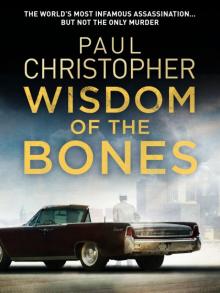 Wisdom of the Bones
Wisdom of the Bones The House of Special Purpose
The House of Special Purpose The Second Assassin
The Second Assassin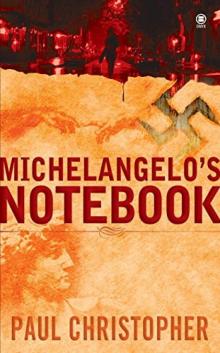 Michelangelo's Notebook
Michelangelo's Notebook Templar Legion
Templar Legion The Sword of the Templars t-1
The Sword of the Templars t-1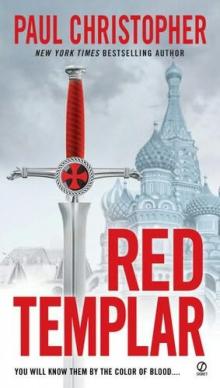 Red Templar
Red Templar The Aztec Heresy
The Aztec Heresy The Templar Legion
The Templar Legion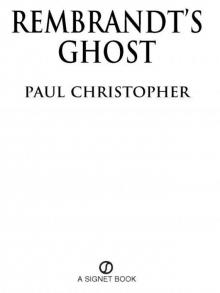 Rembrandt's Ghost
Rembrandt's Ghost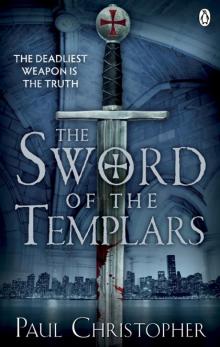 Sword of the Templars
Sword of the Templars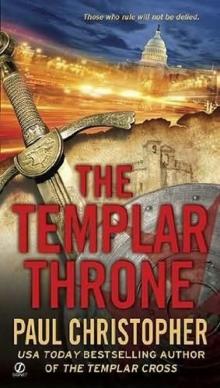 The Templar throne t-3
The Templar throne t-3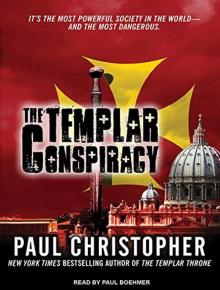 The Templar Conspiracy
The Templar Conspiracy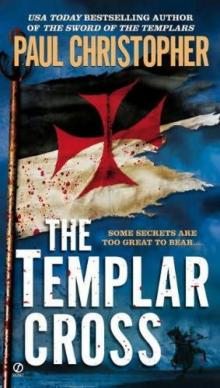 The Templar Cross t-2
The Templar Cross t-2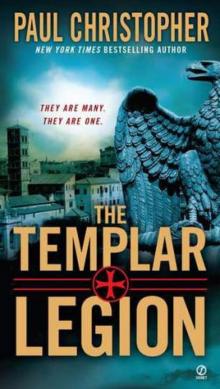 The Templar Legion t-5
The Templar Legion t-5 The Lucifer Gospel
The Lucifer Gospel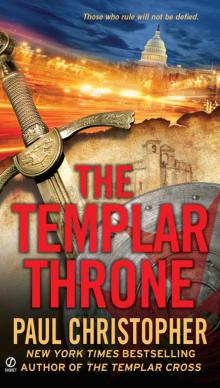 Templar Throne
Templar Throne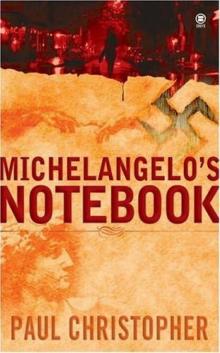 Michelangelo_s Notebook fr-1
Michelangelo_s Notebook fr-1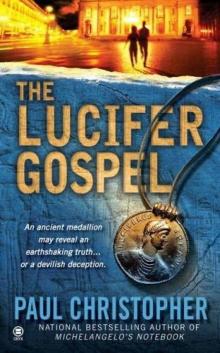 The Lucifer Gospel fr-2
The Lucifer Gospel fr-2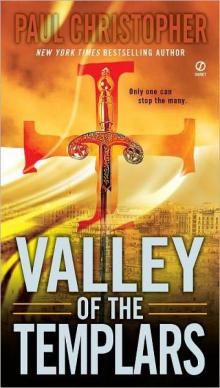 Valley of the Templars ts-7
Valley of the Templars ts-7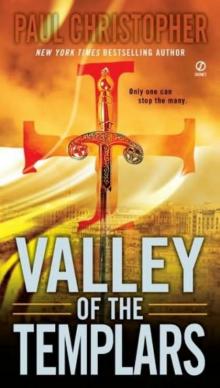 Valley of the Templars
Valley of the Templars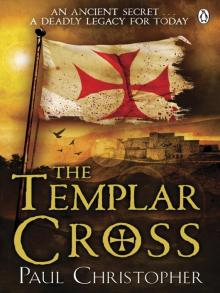 Templar Cross
Templar Cross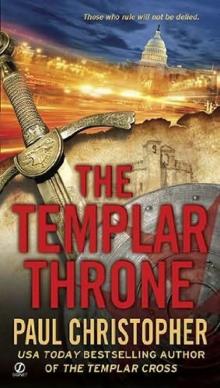 The Templar Throne
The Templar Throne The Templar Cross
The Templar Cross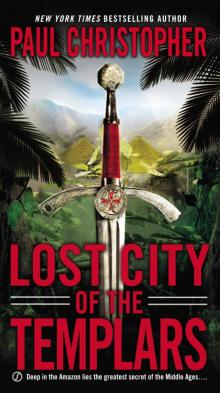 Lost City of the Templars
Lost City of the Templars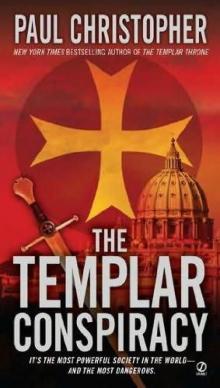 The Templar conspiracy t-4
The Templar conspiracy t-4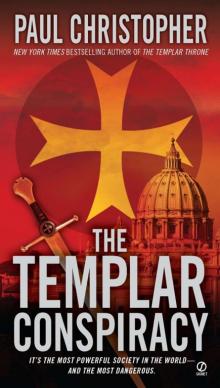 Templar Conspiracy
Templar Conspiracy